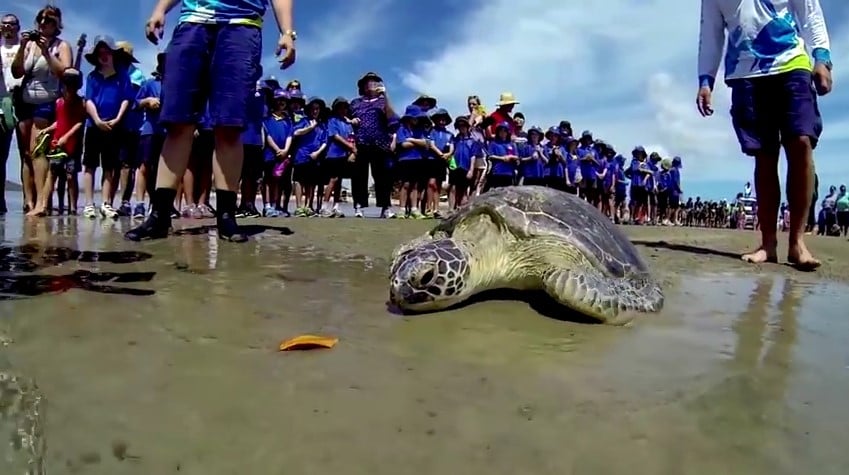Climate changes due to the warmer Earth are increasingly affecting our planet globally. A recent paper reveals that Australia’s Great Barrier Reef Turtles are changing their gender into female. The research was published on Monday.
According to the paper, climate change could affect the green sea turtle’s gender. The temperatures which occur during the incubation period have an impact on which sex the sea turtles become. As temperatures are rising higher globally, the Great Barrier Reef turtles could all become female. Those turtles are already considered endangered species.
The paper has been titled “Environmental Warming and Feminization of One of the Largest Sea Turtle Populations in the World” and has been published in the journal Current Biology. Scientists who are behind the research are from the National Oceanic and Atmospheric Administration (NOAA), California State University, and the Worldwide Fund for Nature Australia.
The research took a look at two groups of turtles which are genetically distinct, named rookeries. They live around the Great Barrier Reef and in it. The scientists discovered that the group of turtles located in the cooler southern area of the reef were between 65% and 69% female, while the group from the northern area of the reef had a much higher percentage of females. Scientists discovered that adult turtles were 86% female while juvenile and sub-adult turtles were 99% female in the northern population.
Researchers think that the Great Barrier Reef turtles feminization has been occurring for at least 20 years. Also, not only the higher temperatures affect the sex of the turtles but also increase mortality rates in turtle offspring.
“While we can hope there might be some cooler years to produce a few more males, overall we can expect the temperatures to increase,” lead author Michael Jensen of NOAA told the Guardian. “Knowing what the sex ratios in the adult breeding population are today, and what they might look like five, 10 and 20 years from now when these young turtles grow up and become adults, is going to be incredibly valuable.”
“This is an invisible change. We can’t see the impact it’s having on a turtle population until a study like this shows some long-term trends,” World Wildfire Fund Australia head, Dermot O’Gorman told the Guardian Australia. He added that climate change silently affects animals and implied that “urgent action was needed” but also that conservationists are testing mitigation measures like shade on beaches where turtles lay their eggs in order to protect them from higher temperatures.





